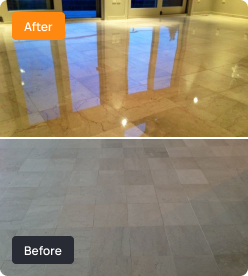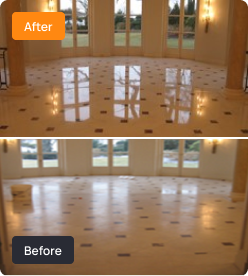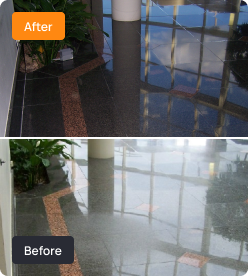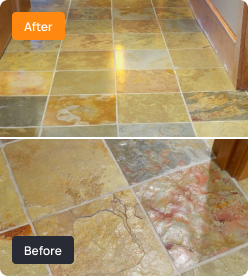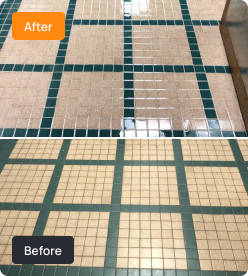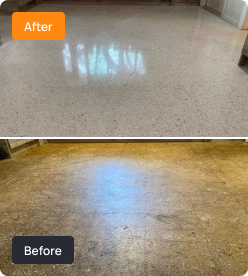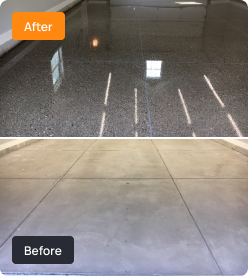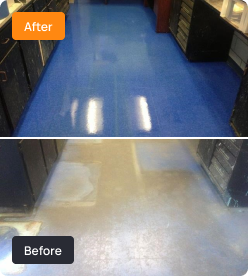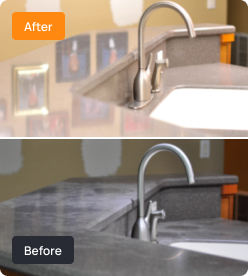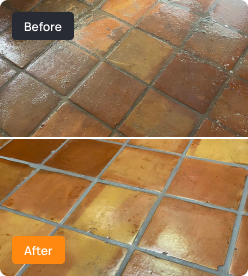Can’t Get Your Grout Clean Here’s Why Professional Care Is Essential
The Science and the Solution for Pristine Surfaces Whether it’s your home or commercial property, every corner resonates with a unique story. From the walls that envelop the space to the floors that cushion every step, every aspect contributes to the comfort and aesthetic appeal of the environment. Among these, floors hold a particularly significant […]
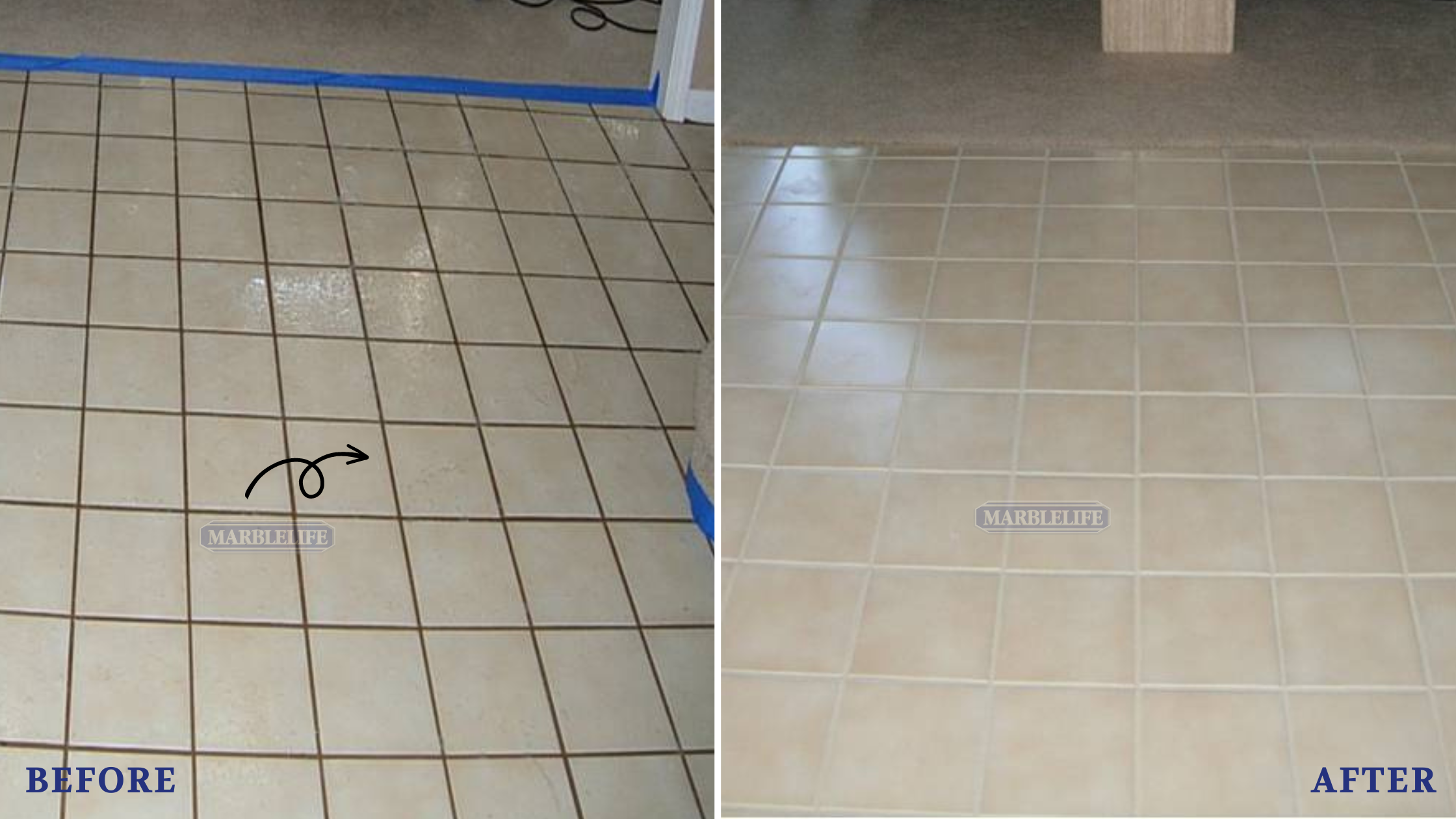
The Science and the Solution for Pristine Surfaces
Whether it’s your home or commercial property, every corner resonates with a unique story. From the walls that envelop the space to the floors that cushion every step, every aspect contributes to the comfort and aesthetic appeal of the environment. Among these, floors hold a particularly significant place in maintaining the overall look and feel of the property. They warmly welcome every visitor, bear the weight of every furniture piece, and are privy to many activities. Today, let’s focus on the primary material that lends color, sheen, and pattern to these floors – the tiles. At MARBLELIFE, we take pride in delivering and installing these floors in convenient-to-handle tiles. But there’s an unsung hero that binds this foundation together – Grout.
Grout plays a vital role in making it possible to transport tiles and create the space, color, and patterns we desire right where we need and want them. It allows us to install and hold it all together seamlessly. However, despite its importance, grout often goes unnoticed and overlooked. It has the crucial task of connecting and sealing the gaps between tiles, acting as a fundamental link in your flooring system. Like a loyal sidekick, it diligently does its job without seeking the limelight. But what happens when this supportive character looks a little lackluster, or worse, downright dirty?
Stained grout draws attention to itself and distracts from the intended look and feel of the space. Worst of all, it conveys a message of neglect – the unsightly appearance screams “Filth,” “Uncared for,” and, in a post-covid world, it could even be perceived as “unhealthy.” As time passes, grout can accumulate dirt, grime, and discoloration, detracting from the overall beauty of your floors.
We all have that mental list of restaurants, retail stores, and gas stations we vow never to return to, no matter how good the service or meal, simply because the appearance of their bathroom floors was less than desirable. We find ourselves trying to exit the room without touching any surface, feeling uncomfortable and questioning the cleanliness of the establishment. The way our floors look can significantly influence how building guests, tenants, and potential customers perceive the management and the overall space.
Grout, in particular, poses a common concern for property owners and managers, as it can be quite challenging to keep clean. Its porous nature and location between tiles make grout susceptible to accumulating dirt, grime, and stains over time, resulting in a discolored and unattractive appearance. The very act of cleaning can exacerbate this issue, as it tends to solubilize surface dirt and oils on the tile surface, allowing them to travel and collect in the lower-level grout lines once the water evaporates and the floor dries. While the tile surface may appear clean, the grout ends up collecting dirt, leading to a non-uniform and, consequently, a dirty appearance. This draws attention for all the wrong reasons, detracting from the beauty of your floors and leaving a negative impression on visitors and tenants.
The impact of stained grout goes beyond aesthetics; it can affect the perception of the entire building and its tenants, ultimately impacting the business performance of both the building owners and the business tenants. For this reason, maintaining clean grout is not just about preserving the aesthetic appeal of your property, but it also fosters a healthier environment and a more positive perception of the building, its management, and the profitability of the building owner and tenants alike.
In surveys conducted by Building and Owner Associations, the “appearance of bathroom floors (grout)” ranks as the number one tenant complaint among office building tenants. Likewise, hotel secret shopper surveys reveal that the appearance of guest room bathroom floors is the primary reason for guests choosing not to return to a hotel. They equate the cleanliness of grout with the cleanliness of the entire room, and understandably so. The stark contrast between clean, uniform, and new grout color compared to stained grout is immediately discernible to the naked eye. You don’t need special equipment to notice the difference; a simple glance at the baseboard and a comparison with the center of the room reveals the disparity in grout color. Stained grout creates the perception of a dirty building, which can be detrimental to any business.
Recognizing that there is a problem is the first step towards enjoying the benefits of a clean and pristine grout appearance. To embark on the journey to achieve spotless grout, one must understand why grout gets dirty and adopt the right approach to effectively and safely clean it. The most significant issue often arises from the assumption that a quick cleaning will do the trick. However, the key to resolving the grout stains lies in understanding the root cause of the problem, implementing the appropriate fix, taking preventive measures to avoid future stains, and establishing a maintenance routine to sustain the restored clean appearance.
Unfortunately, a lack of understanding about grout has led to more floors stained with grout issues than there are solutions. Sometimes, in the pursuit of improvement, one can inadvertently make matters worse. This is not a situation where “good intentions” lead to rewards; instead, it is all about having “good understanding.” While the process isn’t overly complicated, it requires more attention than most people realize.
By reading this, you are about to join a select group of individuals who comprehend the “why” behind grout staining, the methods to correct the problem, and the means to reap the rewards of a clean and uniform grout appearance. This understanding will empower you to preserve the immaculate look of your floors and enjoy the numerous benefits that pristine grout can provide. With the right knowledge and approach, you’ll be able to confidently maintain your grout, ensuring it remains as immaculate as the day it was restored.
The Backbone of Your Tile Flooring: Grout and its Role
When we marvel at the beauty of a perfectly installed tile floor, we’re rarely thinking about the workhorse in the background – the trusty sidekick – our grout. However, to truly comprehend the conundrum asssociated with “unclean” grout, we must first gain a clear understanding of grout itself, its structure, its role in flooring, and the different types available.
About Grout
In its simplest definition, grout is a thick paste or dense fluid, mainly composed of water, cement, and sand. It acts as a filler to seal the spaces between tiles, thereby serving two primary purposes:
- Structural Integrity: By filling the gaps between tiles, grout ensures the tiles stay locked in place, reducing their movement and thereby preventing breakages or cracks.
- Sealing Function: Grout also acts as a barrier against water and other spillages, preventing them from seeping beneath the tiles and causing damage to the underlaying structure.
Various Types of Grout
The world of grout isn’t as one-dimensional as you might thinkassume. There are actually several types, each with their unique characteristics and optimal usage areas. Here’s a quick rundown:
- Unsanded Grout: This type is best suited for wall tiles, vertical surfaces, or tile installations where the grout lines are less than 1/8th of an inch. It is smooth and easy to work into small joints but lacks the necessary binding strength for wider gaps. It should always be used when working with mechanically polished natural surfaces such as marble, travertine, limestone or granite. The sand used in sanded grout can contribute to premature floor wear. Unsanded grout as the name emplies does not have sand. A single sand particle can concentrate a 200 lb persons down pressure from 200lb / 1 sqft or about 1.5 psi to over 1000 psi when all that person’s weight is concentrated through a single point associated with that sand grain as can happen under a stilleto heel, reaching sufficient down pressure to scratch the surface. Non-sanded grout eliminates the grout from becoming the source for this abrasive medium.
- Sanded Grout: For larger gaps (more than 1/8th inch), sanded grout is ideal. The sand particles within provide additional bonding strength, making it perfect for floor and countertop installations where the wider grout line requires the reinforcement provided by the sand.
- Epoxy Grout: Made from epoxy resins and a filler powder, this type of grout is highly resistant to water. Its non-porous nature reduces potential for grout staining for which sanded and non-sanded cementious grout is susceptible, until sealed.. It’s excellent for areas with high moisture or where hygiene is a priority, like bathrooms and kitchens.
- Furan Grout: Composed of polymers of furfuryl alcohol, this grout is highly resistant to chemicals and extreme temperatures, making it ideal for industrial applications.
As you navigate through the process of maintaining your floors, understanding grout – its formation, function, and types – is the first step. However, to find an effective solution to grout staining and discoloration, we must delve deeper into why grout gets dirty in the first place, a topic we’ll explore in our next section.
Why Does Grout Get So Dirty?
Now that we’ve developed a basic understanding of grout, its function, and the different types, we can address the elephant in the room — why does grout become a magnet for dirt and stains? Let’s untangle the science behind grout discoloration and debunk some misconceptions about its maintenance.
Why Grout Attracts Dirt
One of the main reasons grout becomes dirty is due to its intrinsic properties and its position on the floor. Here are the key factors at play:
- Porous Surface: The most common Grout is either sanded or unsanded cementious, grout. When unsealed, or unsanded or not properly sealed, these surfaces have tiny pores that effectively make it a concrete sponge, capable of soaking up any liquid (and the dirt, grime, or dye it may carry) that comes into contact with it. In effect, the very act of cleaning can transfer dirt and oil from tile surface to the lower-than-tile-surface-grout-surface where it is absorbed. Once in the pore, water evaporates and deposits the dirt. Removing from the pore can be as difficult as cleaning the bottom of the inside of at test tube with a sponge. As this builds us – we see grout staining. Over time, this leads to a buildup of dirt and discoloration. The cure is maintaining a proper seal. This means sealing the grout, and then not cleaning with acidic cleaners which can remove or damage the seal. Seals can also be damaged by acidic spills such as vinegar, soda and a myriad of other acidic foods. For this reason grout should be periodically resealed.
- Low Positioning: Grout lines are typically recessed from the tile surface level. This means that as you sweep or mop, dirt and dust particles can be unintentionally pushed into these recesses, causing further grime accumulation.
- Traffic and Wear: High-traffic areas are particularly susceptible to grout discoloration. Regular foot traffic can cause dirt, oils, and other grime. The dirt is rarely directly deposited to the grout line, but rather to the tile surface, but is transferred to the grout line when sweeping or wet mopping the floor.
Misconceptions About Grout Maintenance
Several misconceptions revolve around grout cleaning and maintenance. Here, we aim to dispel a few of these myths:
- All Grout is Created Equal: As we explored earlier, grout comes in various types. The cleaning method effective for one may not be suitable for another. It’s essential to understand the specific kind of grout you’re dealing with before attempting any cleaning or maintenance.
- Harsher is Better: It might be tempting to attack stubborn grout stains with harsh chemicals or abrasive tools, but these can often do more harm than good. They may dislodge or damage the grout, remove or damage it seal, or cause discoloration to your tiles. Acids should never be used on cementious grout unless purposely seeking to remove excess grout from a tile surface, and then only with acid resistant surfaces such as ceramic and porcelain and here again only before the grout seal has been applied, as these grout removers will remove the sealer as well.
- Sealed Grout Doesn’t Need Cleaning: While sealing grout does provide a layer of protection against moisture and stains, it doesn’t render the grout completely maintenance-free. It purpose is to keep the dirt ON TOP of the tile and grout where it can more easily be wiped or damp-mopped away. This is far easier than trying to get dirt and oil OUT of the grout once absobed – or stained. Even sealed grout will encounter dirt and oil, and will require proper cleaning with an appropriate non-damaging cleaner.
The Hidden Pitfalls: DIY Methods and Homemade Cleaning Solutions
In the age of the internet, do-it-yourself solutions have gained quite a reputation, even extending to grout cleaning. Although seemingly cost-effective and convenient, they often bring a host of unseen hazards and potential damages. Let’s uncover the risks associated with DIY grout cleaning methods and homemade solutions.
DIY Methods: Quick Fix or Hidden Havoc?
DIY methods may be tempting due to their perceived convenience and low cost. But the allure of these quick fixes often masks their harmful impact on your grout and tiles. Here’s what you need to know:
- Unsuitable Tools and Techniques: Inappropriate tools like hard metal brushes or inappropriate techniques can damage grout, causing it to chip or dislodg or worse depositing metal fibers that will later rust and stain the surface itself.. This not only mars the appearance of your floors but can also lead to more severe structural issues if water and grime seep through the damaged grout.
- Inaccurate Grout Assessment: Grout comes in many types, and each type requires a unique approach to cleaning. DIY methods seldom take into account the specific grout type, leading to inadequate cleaning or, worse, damage to the grout.
- Incomplete Cleaning: DIY methods often fail to deeply clean grout, only removing surface-level dirt. This gives the illusion of clean grout, while grime continues to accumulate below the surface, setting the stage for more significant problems down the line.
Homemade Cleaning Solutions: A Recipe for Disaster?
While it’s tempting to whip up a homemade cleaning solution from readily available household items, the risks often outweigh the benefits:
- Damage from Acidity: Common ingredients in homemade solutions like vinegar or lemon juice are acidic. Regular use of these can weaken grout, making it more susceptible to cracking and erosion, they can also leech the dyes that provide the grout its color resulting in the “lightening” of the grout which can be confused with cleaning but eventually result in the grout returning to concrete undyed gray. Acids will also damage the penetrating sealers used on sanded and non-sanded cementious grout making the grout more suspectible to staining.
- Discoloration Risks: Certain cleaning ingredients may lead to grout discoloration. Bleach, for instance, can lighten the color of your grout, leaving it looking patchy and inconsistent. Acids as noted above can remove the grout dye.
- Unintended Chemical Reactions: Mixing different cleaning agents might seem like a good idea to boost cleaning power, but it can also result in harmful chemical reactions. For example, mixing bleach and vinegar produces a toxic chlorine gas. This is NEVER a good idea. Never mix cleaners.
The desire to maintain clean, attractive grout is understandable. But as we’ve discovered, DIY methods and homemade cleaning solutions can often cause more harm than good. So, what’s the solution? The answer lies in seeking the help of professionals who have a deep understanding of grout, its maintenance needs, and the right products and techniques to clean it. Up next, we explore the MARBLELIFE solution to grout cleaning and restoration.
Discovering the MARBLELIFE Way: Transforming Grout Cleaning and Restoration
After exploring the intricacies of grout, its susceptibility to dirt, the pitfalls of DIY methods, and homemade solutions, we’re led to one conclusion: grout cleaning and restoration need a specialist’s touch. And this is where MARBLELIFE shines. As a leading name in surface restoration, MARBLELIFE brings expertise, innovation, and a commitment to quality to every grout challenge.
Harnessing Expert Techniques and Solutions
MARBLELIFE’s professional grout cleaning and restoration approach is a comprehensive solution that goes beyond the surface. Here’s what sets our approach apart:
- Personalized Assessment: We understand that every grout situation is unique. That’s why our experts start by examining your grout type, the extent of the dirt or damage, and the specifics of your tile material. This enables us to devise a personalized cleaning and restoration plan tailored to your needs.
- Advanced Cleaning Solutions: At MARBLELIFE, we use in-house developed, cleaning products designed specifically for grout cleaning. These solutions effectively dislodge and remove the dirt, oils, and grime embedded within your grout, without causing any harm to the grout or adjacent tiles. MARBLELIFE MAXOUT DEEP GROUT CLEANER is formulated specifically to help penetrate and lift grime from open grout pores. Once cleaned with MAXOUT, we recommend sealing the grout pores to keep dirt ON the surface where a more traditional daily cleaner can be employed. MARBLELIFE has formulated daily cleaners for each surface we encounter.
- Expert Application: Our trained technicians employ meticulous techniques to ensure thorough cleaning. They ensure that every bit of grout, even in the most hard-to-reach areas, is thoroughly cleaned and restored.
- Preventive Care: Beyond cleaning, we focus on prevention. Once the grout is cleaned, our professionals apply can apply high-quality penetrating sealer to prevent future staining and make routine cleaning easier OR can apply MARBLELIFE COLORSEAL which is formulated to seal using a proprietary non-acid sensitive chemistry removing the susceptibility to acidic cleaners.
The Benefits of the Professional Approach
Opting for the MARBLELIFE professional grout cleaning and restoration service is about choosing efficacy, safety, and long-term value:
- Efficacy: Our combination of expert assessment, specialized cleaning solutions, and professional techniques ensures a level of cleanliness that DIY methods simply can’t match.
- Safety: We take great care to ensure our cleaning process is safe for your grout, tiles, and the wider environment. Our non-toxic, biodegradable cleaning solutions pose no risk to children, pets, or allergy sufferers.
- Long-term Value: With our focus on preventive care, we don’t just clean your grout—we enhance its longevity. This means lower maintenance costs and less frequent need for grout repair or replacement in the long run.
In the journey to Achieving Clean” , sparkling grout, the MARBLELIFE way offers a path that combines deep cleaning, safe practices, and preventive measures. Up next, we delve into why investing in professional grout cleaning and restoration services is a wise decision.
Conclusion
In conclusion, clean grout doesn’t just contribute to the aesthetic appeal of your space—it also plays a vital role in maintaining the structural integrity of your flooring. Yet, as we’ve discovered, the journey to clean, sparkling grout can be fraught with challenges. DIY methods and homemade cleaning solutions, while tempting, can often lead to more harm than good, risking damage to your grout and tiles. However, with MARBLELIFE, you’re choosing a grout cleaning and restoration service that’s built on expertise, a deep understanding of grout, and a commitment to safe, effective, and long-lasting solutions. The result? A floor that shines with beauty and withstands the test of time, traffic, and more. Because at MARBLELIFE, we believe that grout is more than just the ‘filler’ between your tiles—it’s the backbone of your flooring, and it deserves nothing but the best care.


